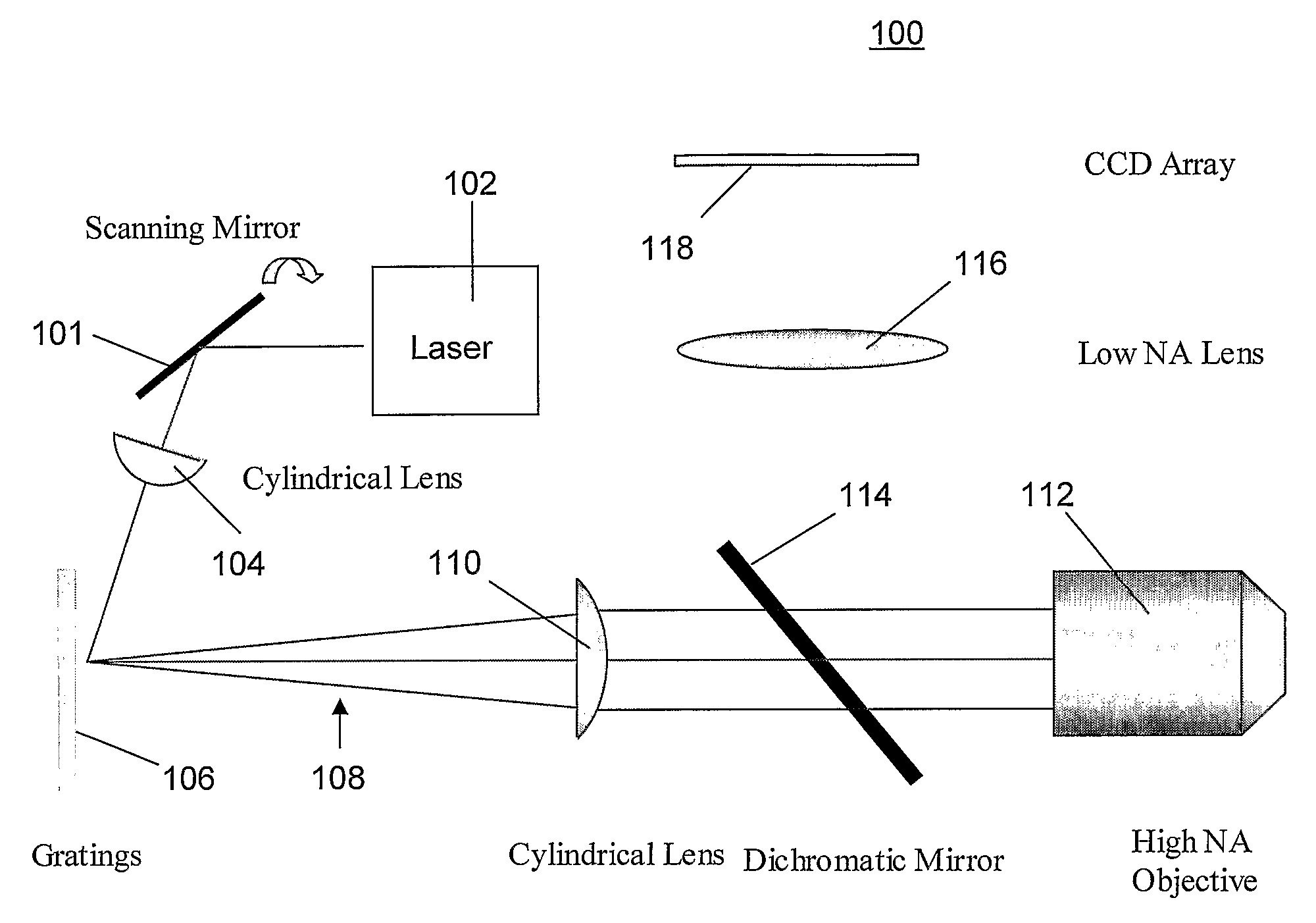Simultaneous Spatial and Temporal Focusing of Femtosecond Pulses
a technology of spatial and temporal focusing and focusing pulses, which is applied in the direction of optical radiation measurement, fluorescence/phosphorescence, instruments, etc., can solve the problems of scattering of intrinsic difficulty in imaging deep into biological tissues, and achieve the effects of improving sbr, reducing background excitation, and maintaining signal strength
- Summary
- Abstract
- Description
- Claims
- Application Information
AI Technical Summary
Benefits of technology
Problems solved by technology
Method used
Image
Examples
Embodiment Construction
[0018]Turning now to a more detailed consideration of the subject invention, a discussion of the mathematical analysis of two photon excitation which led to the development of the present invention will first be presented. By assuming a uniform fluorophore distribution and taking into account that the beam cross section at the surface varies as ˜2, a mathematical analysis shows that the signal-to-background ratio (SBR) in two-photon excitation is approximately given by:
SBR=2π2(NA)2n2λlsexp(-2 / ls),(1)
where λ is the excitation wavelength, n is the refractive index of the medium, and NA is the numerical aperture of the objective lens. It should be noted that the derivation of Eq. (1) only takes into account the spatial focus and assumes that the temporal pulse width is independent of space, i.e., the excitation beam can be separated into independent spatial and temporal components. Being a nonlinear process, however, the efficiency of multiphoton excitation depends strongly on the exci...
PUM
 Login to View More
Login to View More Abstract
Description
Claims
Application Information
 Login to View More
Login to View More - R&D
- Intellectual Property
- Life Sciences
- Materials
- Tech Scout
- Unparalleled Data Quality
- Higher Quality Content
- 60% Fewer Hallucinations
Browse by: Latest US Patents, China's latest patents, Technical Efficacy Thesaurus, Application Domain, Technology Topic, Popular Technical Reports.
© 2025 PatSnap. All rights reserved.Legal|Privacy policy|Modern Slavery Act Transparency Statement|Sitemap|About US| Contact US: help@patsnap.com



